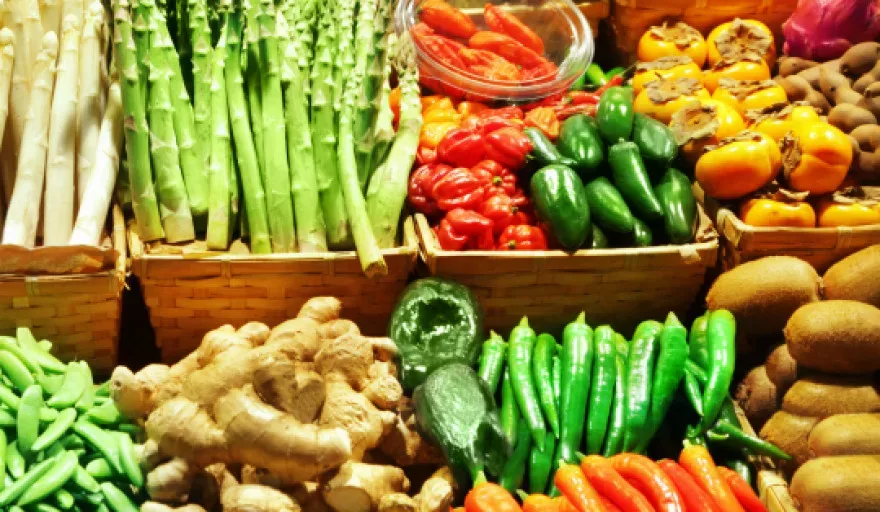Food waste is never far from the headlines and has long been a thorny issue for retailers and consumers alike. The figures are staggering: A leading UK supermarket chain generated almost 30,000 tonnes of food waste in the first half of 2013, while the Waste and Resources Action Programme (WRAP) suggests 4.2 million tonnes of food went to waste in the UK in 2012.
Aside from the obvious sustainability and ethics issues, this surplus is hitting grocers’ bottom lines and reducing visibility of profits for the whole supply chain. The finger of blame is usually pointed at the cornucopia of price promotions found on grocers’ shelves as they strive to compete with the ‘dreaded discounters’.
It’s true that the number of deals has accelerated surprisingly quickly; our customers tell us that up to 50 percent of sales now come from deals and promotions, compared to just 12 percent five years ago. And, anecdotally, it’s estimated 60 percent of waste is caused by inaccurate forecasting around those deals.
And this is just the beginning. Recent research by the Institute of Grocery Distribution sees the fastest growth in the UK grocery market coming from the discounters, whose value will double to £21.4bn by 2019. Convenience stores and online channels are not far behind, with superstores holding on to just 35 percent of the market. This all points to one thing: the price wars are here to stay.
If grocers want to be in control of their own destiny in this evolving landscape, it’s not a case of running fewer promotions but being smarter about forecasting. They need to know what the demand will be for offers, through which channels, what factors could affect sales, and how these will impact sales of other products in that category. And they need to be able to do this on a store-by-store level so they can make good decisions around inventory, supply chain management and distribution.
Unfortunately, many grocers still rely on manual calculations and ‘gut feel’ to make decisions. Forecasting is usually based on data from the past few weeks combined with year-on-year figures, across all stores. This approach does not take into account new information – such as adverse weather or seasonality – nor can it be applied at a local level to appropriately forecast for individual stores. Faced with a growing demand for more local convenience stores, it’s little wonder that waste is so high: if half your business is from deals, but you cannot accurately predict demand, bad decisions are inevitable.
Getting the forecasting right is an easily attainable goal. Predictive analytics tools can now give grocers unprecedented insight, at a local level, to produce accurate forecasts and optimise inventory across the supply chain.
For example, if a grocer wanted to run a promotion around fresh pizzas, it could use predictive analytics to create forecast simulations based on all historical data around similar offers – not just demand from last month or last year. This enables a full understanding of how other factors might affect demand: for example the weather, major sporting events, day of the week, or other offers in the store.
These simulations can be applied to individual stores, or viewed as a network, to enable better decision-making around inventory on a local and regional basis. This insight is not limited to the pizza range on offer, but can extend to forecasting the impact on other pizza ranges or even the whole ready meal category. So waste can be reduced across the store, not just on promotional items.
This granular level of insight will only become more important as grocers look for growth from convenience stores, where store and storage space is at a premium. And, as demand for online shopping and Click & Collect increases, it will be crucial for managing distribution and ensuring products are available where they’re required.
The fickleness of customers is another major variable in the wastage equation, and one that can be countered by predictive analytics. As the analysis is quick and easy to run, grocers can easily react to a changing environment. For example, grocers can monitor consumer sentiment via social media, or forecast the impact of promotions at a local competitor, enabling them to increase availability or redistribute produce appropriately.
Better forecasting doesn’t just enable grocers to reduce waste and meet availability, but can also empower better negotiations with suppliers – giving greater visibility on profits. For example, one major Nordic grocer is taking the lead on a more sustainable approach to forecasting and planning promotions. Using predictive analytics, it is now able to forecast so accurately that it can invite suppliers to tender for deals, turning the table on the traditional model of supplier-driven promotions.
That same Nordic grocer is also driving sustainability; by being more responsible in its communications with farmers, it can reduce the wastage at supplier level too. So it’s a win-win situation. By using predictive analytics to improve forecasting, the entire supply chain feels the benefits of reduced waste.
It seems certain that the UK grocery market will be a different beast in 10 years from now. Grocers will need to re-evaluate the role of physical stores: online channels will drive the need for better inventory management and distribution models. But, despite its detractors, customers will always love the trusty promotion. The winners will be the grocers that can accurately forecast which promotions will be most successful and make good decisions to reduce waste and protect profits.
A better way is to use historical data and current trading conditions to properly plan for future events.
For even more details about the difference that analytics makes in retail, download the recent SAS EKN Report: 3rd Annual Analytics in Retail Study.


































